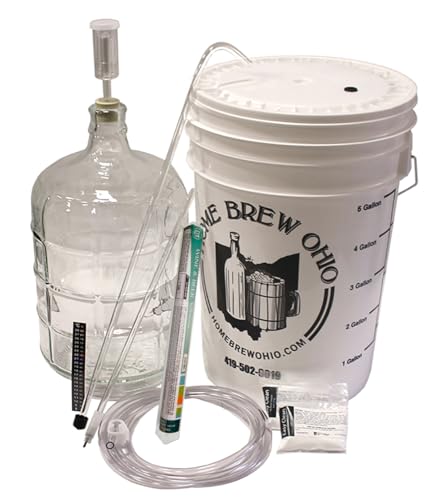My wine is bacteria-free!!!!
I gave our local food safety lab a bottle of my prickly pear wine and asked them what tests they can do. They told me one bottle was insufficient for all the tests they could do, but it was enough for bacteriological assay (without a yeast/mycological assay). I went around today and I was told that they cultured my wine for a week and they didn't find any bacterial colonies!!!! Yayyyyyy!!!
I didn't boil my fruit first (even though all recipes pertaining prickly pear suggest you do) because I wanted as little chance of pectins activating since I had/still have no pectinase. I sulfited the must three days after I blended the fruit, because I wanted it to first get as much spontaneous fermentation with local bacteria and yeasts to give it a terroir before unleashing Red Star Premier blanc and Premier Cuvee co-culture starter on it. [Research paper- Microbial Ecology Studies of Spontaneous Fermentation: Starter Culture Selection for Prickly Pear Wine Production by G.K. Rodriguez-Lerma and all]
I used a food-grade plastic bucket (that didn't seal air-tight) throughout because glass carboys are hard to find and cost a kidney. I left the hydrometer in there throughout because I didn't want to bother to sanitise it time and again; just gave it a whirl with sanitised fingers everytime I wanted a reading. After fermentation was done, to control oxidation, I laid a bleach-soaked-hot-water-rinsed plastic sheet on the bucket and placed the lid on top of it to create a better seal and cold-crashed it in a fridge for three weeks. I sulfited it again after that and left it alone.
When bottling, it had already been more than a week since sulfiting. I didn't add more nor did I sanitise the clean bottle with anything but hot water. The cork was a different matter entirely. Since my corker isn't due to arrive till the end of January (if at all, but I'm staying optimistic), I had to whittle the cork (#9) by hand using a whetstone until it was tapered enough to enter halfway through, then called it a day. The cork wasn't sanitised, and even if it was, the whetstone would have likely contaminated it or the sanitiser wouldn't have reached the inner layers of it I carved out. My guess is, there was still enough sulfite in the wine to cover for my lapse of hygiene there. Either that, or the 16% alc by vol did its magic.
I will never advocate lapse of cleanliness (it's close to godliness if nothing else) but mysophobia isn't warranted for winemaking. If my storeroom with my frankly atrocious approach to sanitisation and initial fermentation with whatever was on the fruits didn't kill this wine, then I think other people who're procrastinating their next wine out of fear of all the washing involved can relax and get started; wine (16% alc wine, at least) apparently can fend for itself. Evidence:
My wine is bacteria-free!!!!
I gave our local food safety lab a bottle of my prickly pear wine and asked them what tests they can do. They told me one bottle was insufficient for all the tests they could do, but it was enough for bacteriological assay (without a yeast/mycological assay). I went around today and I was told that they cultured my wine for a week and they didn't find any bacterial colonies!!!! Yayyyyyy!!!
I didn't boil my fruit first (even though all recipes pertaining prickly pear suggest you do) because I wanted as little chance of pectins activating since I had/still have no pectinase. I sulfited the must three days after I blended the fruit, because I wanted it to first get as much spontaneous fermentation with local bacteria and yeasts to give it a terroir before unleashing Red Star Premier blanc and Premier Cuvee co-culture starter on it. [Research paper- Microbial Ecology Studies of Spontaneous Fermentation: Starter Culture Selection for Prickly Pear Wine Production by G.K. Rodriguez-Lerma and all]
I used a food-grade plastic bucket (that didn't seal air-tight) throughout because glass carboys are hard to find and cost a kidney. I left the hydrometer in there throughout because I didn't want to bother to sanitise it time and again; just gave it a whirl with sanitised fingers everytime I wanted a reading. After fermentation was done, to control oxidation, I laid a bleach-soaked-hot-water-rinsed plastic sheet on the bucket and placed the lid on top of it to create a better seal and cold-crashed it in a fridge for three weeks. I sulfited it again after that and left it alone.
When bottling, it had already been more than a week since sulfiting. I didn't add more nor did I sanitise the clean bottle with anything but hot water. The cork was a different matter entirely. Since my corker isn't due to arrive till the end of January (if at all, but I'm staying optimistic), I had to whittle the cork (#9) by hand using a whetstone until it was tapered enough to enter halfway through, then called it a day. The cork wasn't sanitised, and even if it was, the whetstone would have likely contaminated it or the sanitiser wouldn't have reached the inner layers of it I carved out. My guess is, there was still enough sulfite in the wine to cover for my lapse of hygiene there. Either that, or the 16% alc by vol did its magic.
I will never advocate lapse of cleanliness (it's close to godliness if nothing else) but mysophobia isn't warranted for winemaking. If my storeroom with my frankly atrocious approach to sanitisation and initial fermentation with whatever was on the fruits didn't kill this wine, then I think other people who're procrastinating their next wine out of fear of all the washing involved can relax and get started; wine (16% alc wine, at least) apparently can fend for itself. Evidence:
My wine is bacteria-free!!!!











































